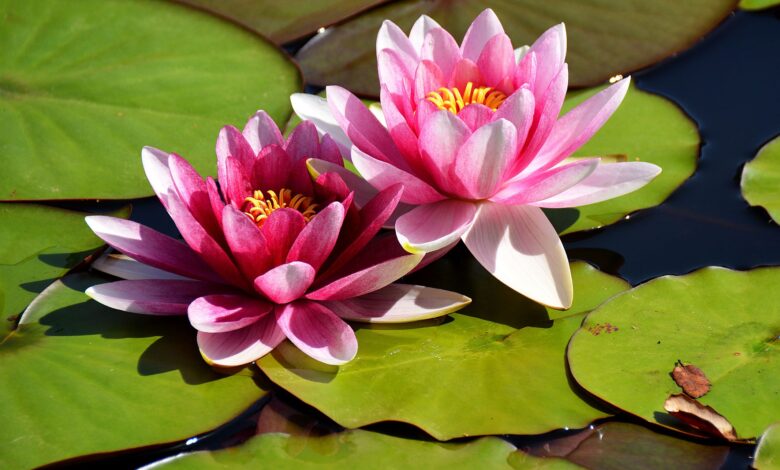The Lotus Flower: Symbolism, Cultural Significance, and Biological Beauty?

The lotus flower has captivated the imagination for thousands of years, drawing admiration from diverse cultures worldwide. This beautiful aquatic plant, scientifically known as Nelumbo nucifera, is visually striking and deeply symbolic, representing purity, rebirth, spiritual enlightenment, and resilience. From its unique biology to its profound role in various religious and cultural traditions, the lotus flower is honoured as one of Earth’s most cherished and meaningful plants.
This article will explore the lotus flower’s origins, symbolism, cultural significance, and biological characteristics. By delving into the qualities that make this plant unique, we can better appreciate its role in nature, art, religion, and personal symbolism.
Origins and Biological Characteristics of the Lotus Flower
The lotus flower belongs to the Nelumbonaceae family, specifically to the species Nelumbo nucifera, commonly known as the sacred or Indian lotus. This plant is native to Asia and grows in the calm, shallow waters of rivers and ponds. The lotus has adapted remarkably well to its aquatic environment, with leaves that float on the water’s surface and flowers that rise above the water, creating a stunning and surreal sight.
One of the unique biological traits of the lotus flower is its ability to maintain an internal temperature similar to that of warm-blooded animals. This rare thermoregulation among plants is believed to help attract pollinators, such as bees and beetles, by providing a warm and welcoming environment.
In addition to its beauty, the lotus is known for its resilience and adaptability. Its seeds can remain viable for thousands of years, surviving in harsh conditions and germinating even after long dormancy. This remarkable longevity is one of the reasons why the lotus has become a symbol of resilience and rebirth.
Symbolism of the Lotus Flower
The lotus flower holds deep symbolic meaning derived from its unique life cycle. Growing in murky waters, the lotus rises above the mud to bloom with pristine petals, symbolizing the triumph of purity and enlightenment over adversity. The flower’s journey from the depths to the surface of the water has inspired people to view it as an emblem of personal growth, transformation, and spiritual awakening.
The lotus flower represents different stages of human consciousness and self-realization in many cultures. As the lotus bud begins to open and reveal its delicate petals, it mirrors the unfolding of one’s inner potential. For this reason, the lotus is frequently associated with meditation, self-discovery, and enlightenment.
The symbolism of the lotus also varies with colour. White lotuses represent purity and spiritual transcendence, while pink lotuses symbolize the historical figure of the Buddha and the path to enlightenment. Blue lotuses are often associated with wisdom and knowledge, while red lotuses signify love and compassion.
The Lotus Flower in Ancient Egyptian Culture
In ancient Egyptian culture, the lotus flower was revered as a sacred symbol of creation and regeneration. The Egyptians believed the lotus was the first flower to bloom after the primordial waters receded, making it a symbol of creation and the emergence of life. Depictions of the lotus can be found in Egyptian art, jewellery, and hieroglyphs, often associated with gods and goddesses.
The blue lotus, specifically Nymphaea caerulea, was commonly associated with the sun god Ra and the cycle of life, death, and rebirth. It was believed that the sun god emerged from the lotus flower at the beginning of time, symbolizing the dawn of a new day and the promise of rebirth. The flower’s ability to open in the morning and close at night added to its association with renewal and the eternal life cycle.
Ancient Egyptians also used the lotus flower for medicinal and ritual purposes. The blue lotus was sometimes brewed into tea or wine, which is believed to have psychoactive properties that provide a sense of relaxation, euphoria, and spiritual insight. This practice is considered an essential part of religious ceremonies and rites.
The Lotus Flower in Hinduism
The lotus flower is highly significant in Hinduism, closely associated with divinity, purity, and beauty. Many Hindu deities are depicted seated on or holding lotus flowers, symbolizing their detachment from the material world. In Hindu mythology, the lotus represents the universe’s origin, and it is said that the protector god Vishnu slept on a cosmic ocean, from which a lotus emerged bearing the god Brahma, the creator of the universe.
In Hindu iconography, the goddess Lakshmi, the deity of wealth and prosperity, often stands on a fully bloomed lotus, symbolizing spiritual and material abundance. The flower reminds us that true wealth is achieved through inner growth and detachment from worldly desires.
The Hindu concept of “Padma” (Sanskrit for “lotus”) symbolizes the unfolding of the human soul. Just as the lotus rises from the mud and blooms, so is the soul thought to transcend earthly obstacles to reach enlightenment. In yogic philosophy, the lotus is associated with the chakras, especially the crown chakra, representing the highest level of spiritual consciousness.
The Lotus Flower in Buddhism
In Buddhism, the lotus flower is one of the most potent symbols of spiritual growth and enlightenment. It represents the soul’s journey toward enlightenment, with the mud symbolizing human suffering and material attachment. The flower’s upward ascent represents the pursuit of purity and wisdom.
The Buddha is often depicted seated on a lotus flower, symbolizing his detachment from the material world and his state of enlightenment. The Buddhist concept of “lotus mind” refers to a state of mental purity and clarity, free from the distractions of the physical world.
The lotus flower is also featured in the “Lotus Sutra,” one of the most revered texts in Mahayana Buddhism. This scripture teaches that all beings possess the potential for Buddhahood, much like the lotus flower, which emerges from the mud but remains untouched by it. The Lotus Sutra emphasizes that spiritual growth and transformation are always possible, no matter how challenging or “muddy” one’s life may seem.
In Buddhist symbolism, different colours of lotus flowers hold specific meanings:
- White Lotus: Spiritual purity and enlightenment
- Pink Lotus: The supreme lotus, representing the Buddha himself
- Blue Lotus: Wisdom and knowledge
- Red Lotus: Compassion and love
The Lotus Flower in Art and Literature
Over centuries, the lotus flower has inspired countless artists, poets, and writers. Its elegant, symmetrical petals and graceful form have made it a popular subject in art and design, especially in Asian countries. Lotus flowers are commonly featured in traditional Japanese paintings, Chinese ceramics, Indian temple carvings, and Tibetan thangka art.
In literature, the lotus often symbolizes themes of purity, peace, and the triumph of inner beauty over external challenges. For example, the lotus is referenced in ancient Sanskrit texts like the Bhagavad Gita, where the plant is praised for its ability to remain untouched by the water it grows in, representing detachment and spiritual purity. Similarly, in Japanese haiku and Chinese poetry, the lotus is used as a metaphor for resilience, inner beauty, and the fleeting nature of life.
Western poets and authors have also drawn inspiration from the lotus, particularly during the Romantic era, when the flower’s symbolic connection to purity and transcendence resonated with the themes of nature and spirituality.
Scientific Research and Modern Uses of the Lotus Flower
Modern scientific research has uncovered exciting health benefits associated with the lotus flower. Lotus seeds, roots, and leaves have long been used in traditional Asian medicine, particularly Ayurveda and Traditional Chinese Medicine (TCM). They are believed to have antioxidant, anti-inflammatory, and antimicrobial properties.
Lotus seeds, often called “makhana” in India, are a popular health food, rich in fibre, protein, and essential minerals. They are commonly used in teas, soups, and herbal remedies to improve digestion, reduce stress, and support cardiovascular health. The lotus root is also a common ingredient in Asian cuisine, valued for its crunchy texture and rich nutrient profile, including vitamin C, fibre, and potassium.
In addition to its medicinal uses, the lotus plant has inspired technological innovations. The natural structure of the lotus leaves repels water and dirt, a phenomenon known as the “lotus effect.” This property has influenced the development of water-repellent coatings, self-cleaning surfaces, and eco-friendly materials in industries ranging from automotive to textiles.
Conclusion: The Lotus Flower as a Timeless Symbol of Resilience and Beauty
The lotus flower is more than a beautiful plant; it is a timeless symbol that resonates across cultures, religions, and philosophies. From its roots in murky waters to its blossoming into a pristine and unblemished flower, the lotus embodies the journey from darkness to light, ignorance to wisdom, and suffering to peace. Its presence in the arts, literature, religious iconography, and scientific research speaks to its universal appeal and significance.
Whether viewed as a metaphor for personal growth, a spiritual emblem, or a source of inspiration in art and science, the lotus flower continues to inspire and uplift. The lotus reminds us that beauty, purity, and strength can emerge even from the most challenging circumstances in a world of challenges and uncertainties. The lotus flower remains a beacon of hope, resilience, and the enduring human spirit, making it one of nature’s most potent symbols.





